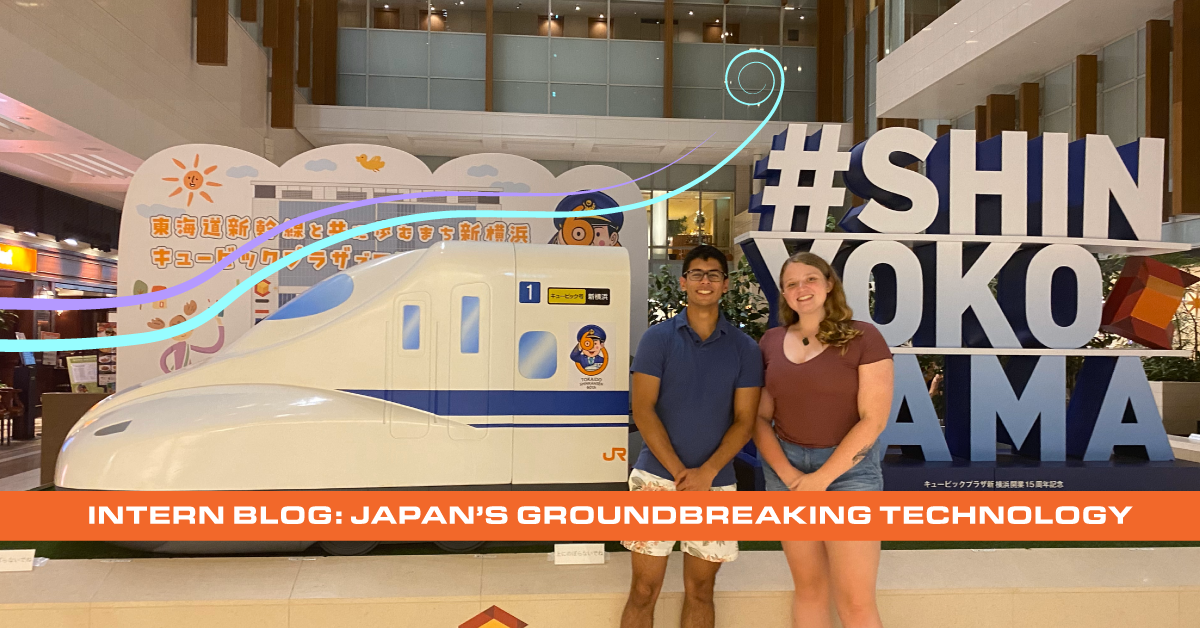When I travel, I often have strong feelings of anxiety about the remote possibility of missing my flight. No matter how unrealistic it may be, I always want to allot as much time as possible in case something within my travel plans goes awry. So when I arrived at the gate for my flight to Japan six hours early, I had plenty of time to ponder what exactly this internship experience would be like. I knew that it was a joint program being done through both The Northeast Maglev Company and the Central Japan Railway Company. And due to our prior online lectures, I also knew that I would be visiting Japan along with a cohort of seven other students from five different schools across the US to learn about various facets of JRC, Japanese transportation infrastructure, and new technologies. But no matter how much time I took to contemplate the vast array of possibilities, my imagination could not even come close to how much I learned and how much we were able to experience in the span of just two weeks.
The time passed incredibly quickly, as each day was a whirlwind of site visits, train rides, and explorations through different cities in Japan. We visited Tokyo, Kyoto, Ise, Mishima, Hamamatsu, and Nagoya, among others. Each site visit was planned to-the-minute, and each one had a corresponding lecture to provide us with more background information. Many of the lectures were also presented by employees that had been working for JR Central for upwards of 10 years, with experience in many different positions. One of the most interesting things was being able to visit the Mishima General Education Center, a dormitory-like facility that houses JRC employees for multiple months for training before they begin OJT (on the job training). It was clear how much time, effort, and planning goes into ensuring that all the trains can run smoothly and efficiently.
One thing that was also evident throughout our travels was how railway transportation as a concept has become ingrained into Japanese culture. We were able to stay in the Nagoya Gate Tower Hotel, which is in the same building as Nagoya station (housing the shinkansen, JR conventional lines, and the Nagoya city subway). It also houses dozens of shops and restaurants, ranging in price, cuisine, and style. It was astonishing to see just how much is included in this one building, all owned and managed by Central Japan Railway. It made it clear how invested JRC is in every aspect of their business, making sure that they are truly positively impacting people’s experiences.
Not only that, but there are also countless stores and shops (especially in Tokyo station) that have specific products marketed to directly cater to the shinkansen. Many famous Japanese character brands such as Peanuts and Miffy have items that feature the characters themselves riding the trains. The way that JRC so wholeheartedly leans into the marketing of their trains that it has become integral into Japanese culture is fascinating, and something that would hopefully be applied to the high-speed rail markets in the United States. Not only does this provide even further potential for profit, but it creates a connection between the business and the consumer, likely improving their feelings towards the transportation system and increasing the likelihood that they will continue using it in the future.
This was an extraordinary trip for so many reasons, and it was made even better by the fact that almost anywhere in Japan can be accessed using trains. Last fall, I also spent the semester abroad in Nagoya, and I was so excited about the opportunity to return. While I was fascinated by the transportation systems even then, I was not even remotely able to view the more in-depth systems involved in the behind-the-scenes aspects of JRC’s day-to-day work. Doing the internship program with students from various schools in the US also made it more enriching, as we were each able to learn from the lectures and one another. It is genuinely impossible to not be amazed by the futuristic nature of Japanese transport, and it is imperative that we continue to facilitate these connections with Central Japan Railway to ensure that American transportation can be revolutionized similarly with the SCMAGLEV.
